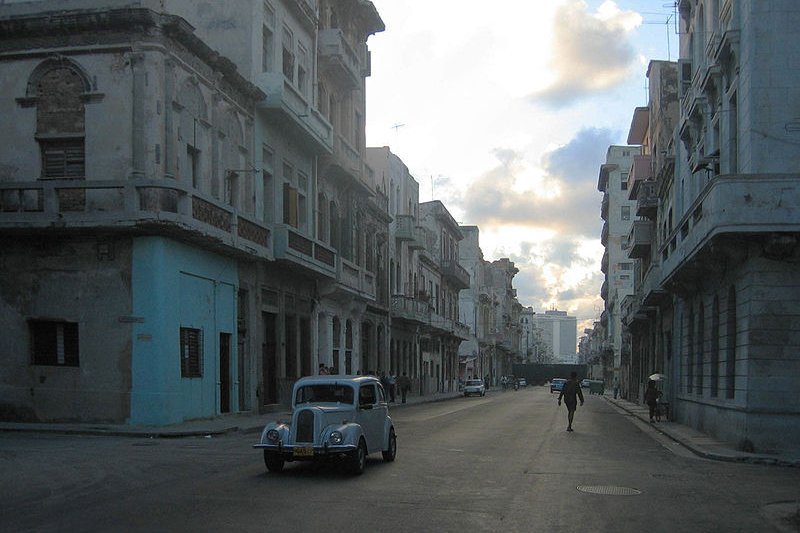 Havana, Cuba
Havana, CubaSource: https://commons.wikimedia.org/wiki/File:DirkvdM_havana_grey.jpg
Author: Dirk van der Made

Havana (La Habana) is the capital and biggest city in Cuba. It covers 721 sq km (278.4 sq mi) and has a population of 2.15 million people (2011 estimate), making it the second largest city in the Caribbean after Santo Domingo. Havana is in the Eastern Standard Time zone, which is five hours behind Coordinated Universal Time (UTC-5) and four hours behind during Daylight Saving Time in summer. The phone area code for Havana is (+53) 7.
Havana is located on the northern coast of Cuba, to the south of the Bay of Havana. From the bay, the city spreads out to the west and south. A ring road, the Primer Arillo de Habana, forms a crescent around the southeastern part of the city, while major highways radiates from central Havana.
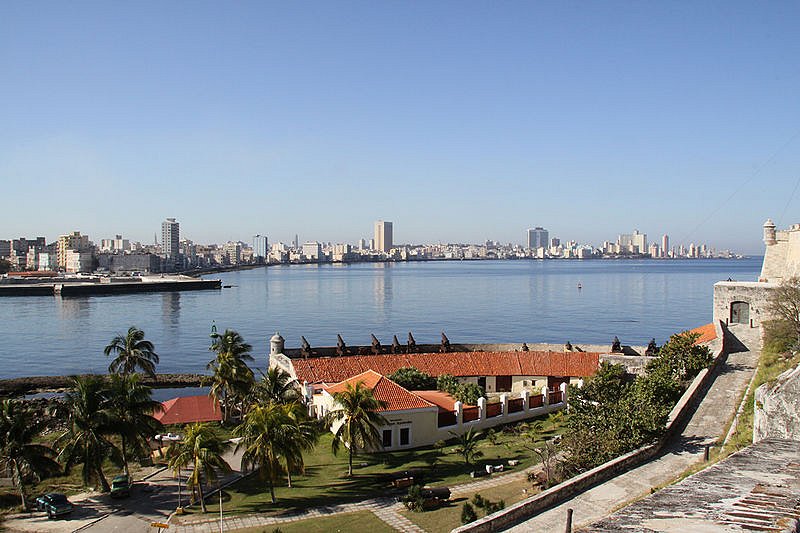 View of Havana, Cuba, as seen from its fort
View of Havana, Cuba, as seen from its fortSource: https://commons.wikimedia.org/wiki/File:Havana_from_the_Fort_(3216250272).jpg
Author: tony Hisgett

Havana experiences a tropical climate with fairly constant temperatures throughout the year. Hottest months are July to September, when the temperature regularly reaches 31°C (87.8°F) and often more. The coldest months are January and February, when it drops to 18.6°C (65.5°F). Rain is heaviest in October, which receives 180.5 mm (7.1 in) of precipitation.
On the western shore of the Bay of Havana (Bahia de la Habana) is La Habana Vieja, or Old Havana, today a World Heritage Site. This is the core of the city that was founded by the Spanish in 1519. Today it has numerous buildings in the baroque and neoclassical style, an increasing number of which have been or are being restored, while some are in various stages of ruin.
 Che Guevara image on the Ministry of the Interior Building in Havana
Che Guevara image on the Ministry of the Interior Building in HavanaSource: https://commons.wikimedia.org/wiki/File:SculptureCheGuevaraCuba.jpg
Author: Mark Scott Johnson

The history of Havana goes back to 1510, when the Spanish arrived and began conquering the island of Cuba. The city was originally founded on the southern coast of Cuba, near present-day Surgidero de Batabanó by Spanish conquistador Diego Velázquez de Cuéllar in around 1514. The choice of site for Havana continued to be shifted between 1514 until 1519, when it was established at the present site.
As a trading port, Havana suffered from repeated attacks by buccaneers and pirates, particularly in the 16th century. To avoid pirate attacks, the Spanish galleons moved across the Atlantic Ocean in a large fleet, protected by an accompanying Armada. These fleets would assemble at Havana Bay between May through August, to start their voyage for Spain in September.
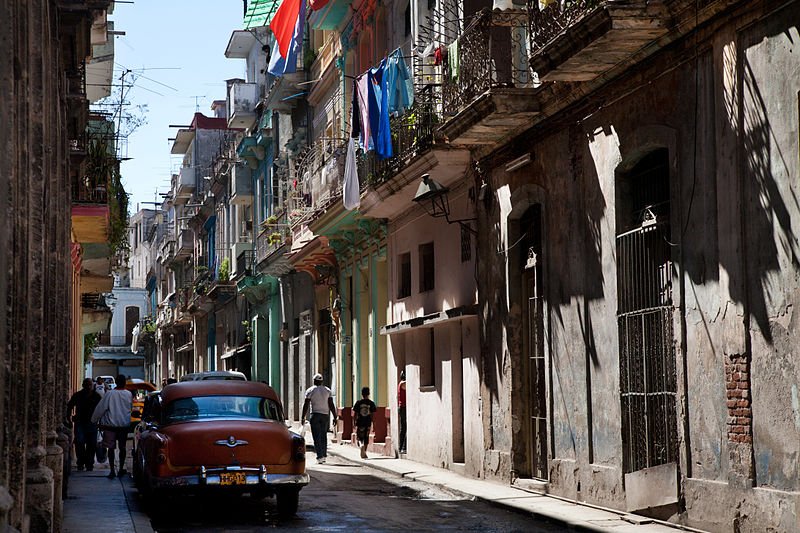 Street in Havana
Street in HavanaSource: https://commons.wikimedia.org/wiki/File:Havana_-_Cuba_-_0417.jpg
Author: Jorge Royan

Granted city status in 1592, Havana continued to grow, interrupted by an epidemic in 1649 which shaved a third of its population. By the mid 18th century, the city had over 70,000 inhabitants, and was the third largest city in the Americas behind Lima and Mexico City, but well ahead of Boston and New York City.
Havana was captured by the British in 1762, but was returned to Spain in exchange for Florida in less than a year. On gaining it back, the Spanish fortified havana by building the Fortress of San Carlos de la Cabaña, one of the biggest Spanish forts in the New World. In 1748, the Havana Cathedral was constructed, originally as a Jesuit church.
The end of the American Civil War in 1865 brought an influx of American planters to Havana to establish plantations around the city. By the mid-20th century, Havana has descended into becoming a den for gambling and corruption. It provided the right climate for the 1959 Cuban Revolution, in which the new regime of Fidel Castro promised improvements in social services and public housing, among others.
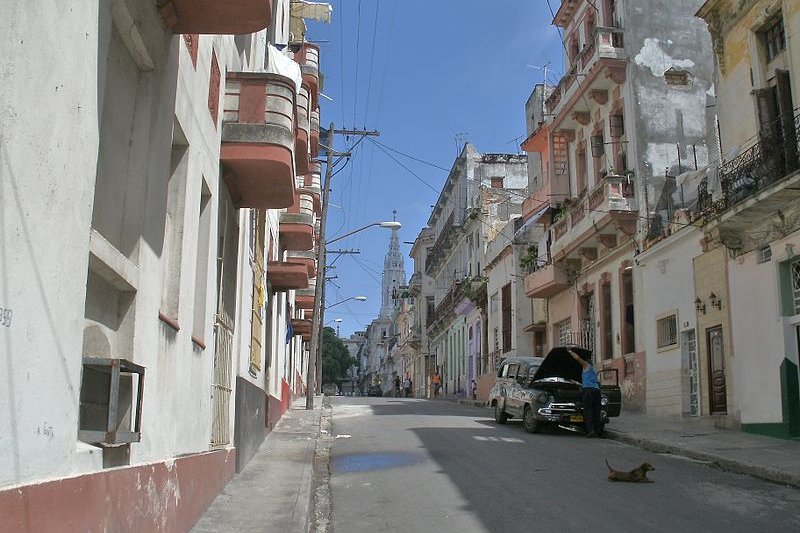 A street in Havana, Cuba
A street in Havana, CubaSource: https://commons.wikimedia.org/wiki/File:Penalver.jpg
Author: Yelles

The new regime's expropriation of private property and industry, as well as the U.S. embargo on the country, had a disastrous effect on Havana. By 1968, all forms of private businesses have been nationalized, and remain so till this day. Those who could left Cuba, to the effect that 15% of Cubans have left the country, despite a ban on free travel.
Today, fifty years after the Communist took power, Havana is a showcase of the double standards practised in Communism. Forced to depend on tourism as an income earner, the city has hotels and stores where foreigners are allowed to patronize, but the locals are not. Similarly, foreign investments are welcome, but locals are barred from participating. As a result, Cubans are forced into menial occupations as cooks, gardeners and taxi drivers.
A visit to Havana provides an eye-opening experience to the mistakes of Communism that have been seen elsewhere in the world.
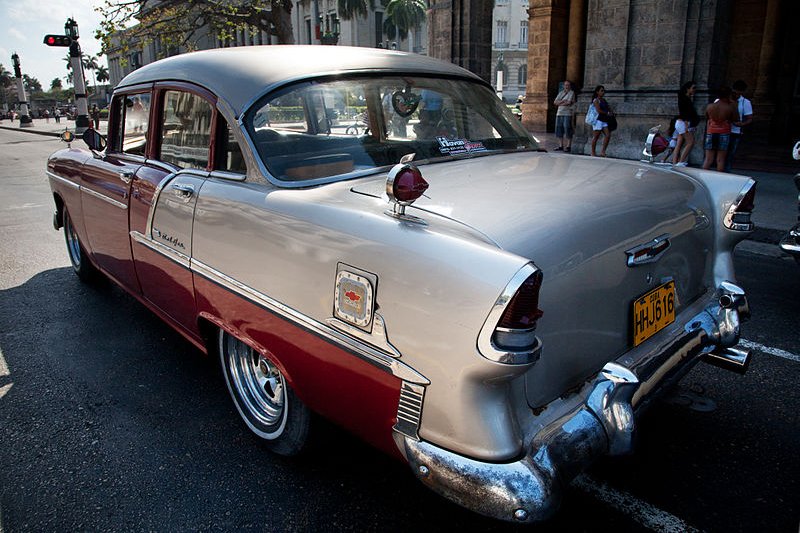 A vintage Chevrolet in Havana
A vintage Chevrolet in HavanaSource: https://commons.wikimedia.org/wiki/File:Havana_-_Cuba_-_0478.jpg
Author: Jorge Royan

Visiting Havana, Cuba
José Martí International Airport (HAV) is the gateway to Havana. Expect the customs to be strict but slow. To get from the airport to downtown Havana, your option is the taxi. Many of these are old American Chevys, but now there are a few modern vehicles being used, including the Russian Ladas, and occasionally modern Skodas, Peugeots and even Mercedes.Places of Interest in Havana, Cuba
Sights in Old Havana (Habana Vieja)- Bodeguita del Medio
- Calle Obispo
- Calle Oficios
- Casa de Africa
- Casa de la Obra Pía
- Castillo de la Real Fuerza
- Catedral de San Cristóbal
- Convento de Santa Clara
- El Templete
- Iglesia de Nuestra Señora de la Merced
- Iglesia del Espíritu Santo
- Museo de Arte Colonial
- Museo del Ron
- Museo José Martí
- Palacio de los Capitanes Generales
- Plaza de San Francisco
- Plaza Vieja
- Seminario de San Carlos y San Ambrosio
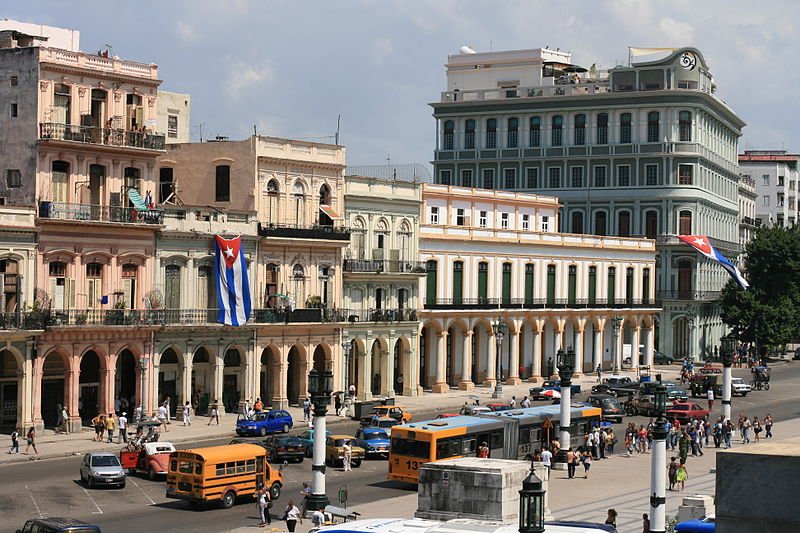 Buildings in Havana, Cuba
Buildings in Havana, CubaSource: https://commons.wikimedia.org/wiki/File:Havana_City,_Cuba.jpg
Author: Krestavilis

Sights in Centro Habana and Prado
- Avenida Carlos III
- Barrio Chino
- Callejón de Hammel
- Capitolio
- Castillo de San Salvador de la Punta
- City Walls
- Gran Teatro de La Habana
- Hotel Inglaterra
- Iglesia del Ángel Custodio
- Iglesia del Sagrado Corazón
- Museo de la Revolución
- Museo Nacional de Bellas Artes
- Museo Nacional de la Música
- Palacio de Aldama
- Parque de la Fraternidad
- Paseo del Prado
- Real Fabrica de Tabacos Partagás
- Casa de las Américas
- Memorial José Martí
- Museo de Artes Decorativas
- Museo Napoleónico
- Necrópolis de Colón
- Plaza de la Revolución
- Quinta de los Molinos
- Universidad de La Habana
- Casablanca
- Castillo del Morro
- Cojímar
- Finca La Vigia
- Guanabacoa
- Jardín Botánico Nacional
- Parque Lenin
- Playas del Este
- Regla
- San Carlos de La Cabaña
- Santuario de San Lázaro
- Tropicana
 Latest updates on Penang Travel Tips
Latest updates on Penang Travel Tips
 Discover with Timothy YouTube Channel
Discover with Timothy YouTube Channel
 PG Food Channel
PG Food Channel
 Learn Penang Hokkien YouTube Channel
Learn Penang Hokkien YouTube Channel
 SojiMart Videos
SojiMart Videos
Latest from Discover with Timothy: Gurney Bay - what to see and do there
About this website

Hello and thanks for reading this page. My name is Timothy and my hobby is in describing places so that I can share the information with the general public. My website has become the go to site for a lot of people including students, teachers, journalists, etc. whenever they seek information on places, particularly those in Malaysia and Singapore. I have been doing this since 5 January 2003, for over twenty years already. You can read about me at Discover Timothy. By now I have compiled information on thousands of places, mostly in Peninsular Malaysia and Singapore, and I continue to add more almost every day. My goal is to describe every street in every town in Malaysia and Singapore.
Copyright © 2003-2024 Timothy Tye. All Rights Reserved.


 Go Back
Go Back